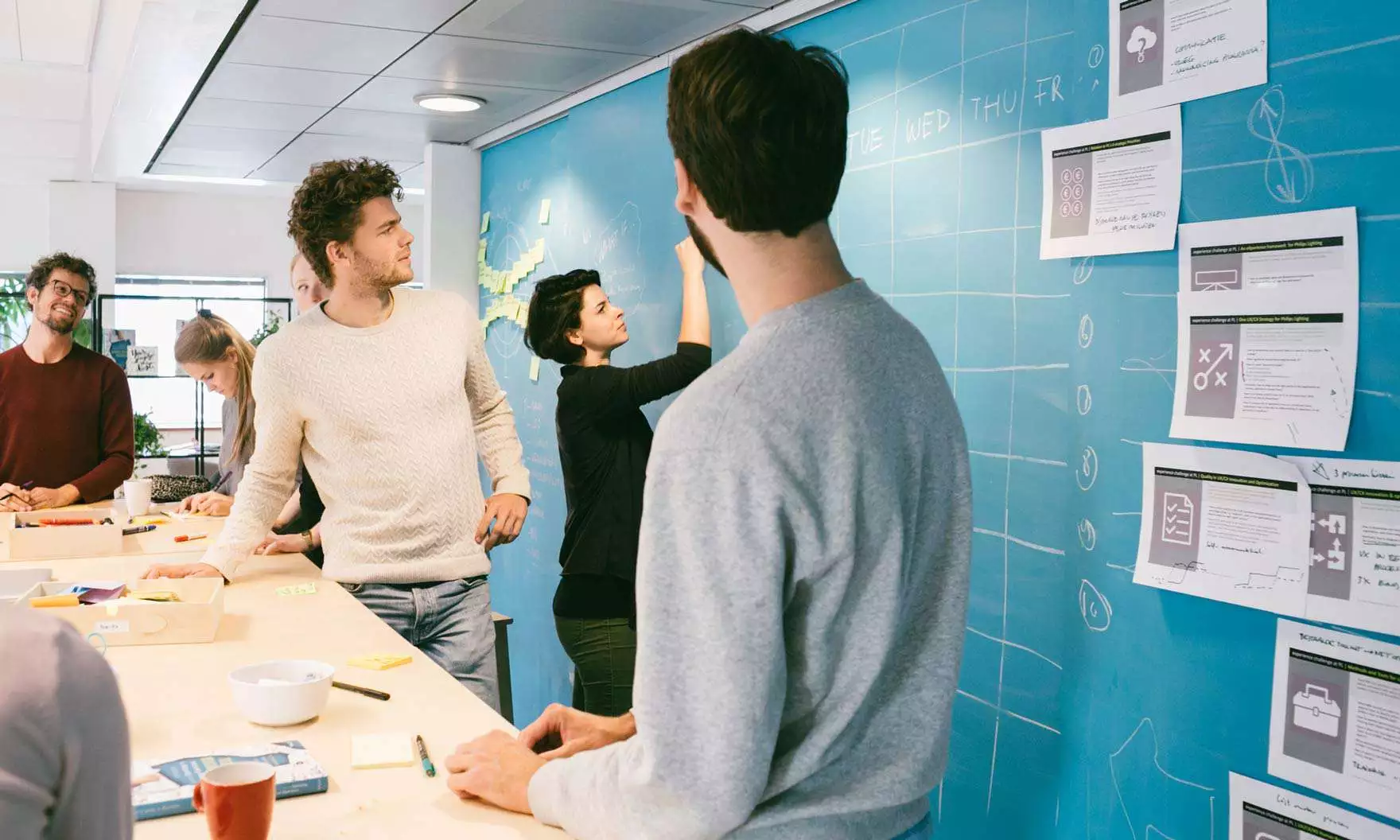Are you able to fuel your innovation with the discovery of real unmet customer needs, rather than basing it on your team’s assumptions?
In our project we didn’t go out to validate a product idea or an assumption about a problem we thought people had. Instead we set out to discover what it was that people really needed. Throughout the project, we adopted an open minded explorative attitude to discover problems we didn’t know about and use those as launching pad for ideation. Lean start-up tells you to go out and validate your product idea. We say: go out and discover what people want and then ideate.
Are you able to organise the business around these customer needs, rather than around a preconceived technology or product idea?
In our project, we mapped the needs we uncovered in a customer lifecycle that spanned planning, buying, installing, using and improving. It was this lifecycle that formed the backbone for the design work, the business architecture, the organisational structure and the business case. Alongside that we ran a Lead Customer Programme of early adopter customers that were involved in the whole creation process. Not only for validation but also for co-creation and on-going insight research.
Are you able to create a truly new, meaningful and differentiated offer, rather than trying to capture value from what’s been done before?
In radical innovation it’s vital to challenge conventions and not stick to what’s already in place. This requires solid insights, transformed into a strong brand vision that guides the innovation process. This vision is the sweet spot that marries what’s important for your customers in their lives with how you can play a role in it. Conceptually, everything you do emerges from this vision, not form leveraging existing resources, infrastructure or sunk costs. In our project, we had the freedom and the talent to harvest this vision in its purest form, and let it spark all our creativity to create a truly new offering, without compromise.
Are you able to build an omni-channel, multi-touchpoint experience eco-system, rather than just a stand-alone product?
Livework has never been focused on a single design discipline or on one touchpoint or channel. We love to design holistic experiences and our clients in the start-up project allowed us to do just that. We put the customer’s needs at the heart of the design challenge and then brought in our network in product, retail, digital and brand design. Then we combined these disciplines with our expertise in service and business design. The result was a holistic, seamless, omni-channel offering where all touchpoints along the lifecycle were seamlessly orchestrated.
Reflecting on these 4 key factors we’ve realised how effective our service design approach has been at making this venture a success. We maintained a consistent focus on discovery and understanding, building the business around the customer’s needs, challenging conventions to create new value and orchestrating touchpoints across channels. All this contributed to creating an experience that stands out in the market as well as in the hearts of our prospective users.
We’ve also learned that to innovate in such a way is a far cry from business as usual in large corporations. That remains the biggest challenge of all: to overcome barriers of culture, structure and legacy that stand between big organisations and disruptive innovation. Our next article in this series will focus on the organisational challenges that radical innovation poses.
We hope our 4 key factors for success may help you in your project. Drop us a line if you want to learn more about our work for start-ups and larger organisations. Also if you want to get to know Alexandra’s work on Livework Foundry, our corporate start-up programme.




